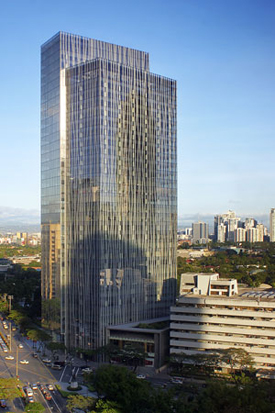A Plant Tour: Single-Source Glass Fabrication
Size Limitations for Glass Units and IGUs
A benefit of recent manufacturing technology has been the increase in insulating and monolithic glass panel sizes, shapes and designs that are achievable for practical architectural application. Architects around the world have seen buildings with more glazed area, more transparency, and greater views and natural light penetration. With many building designs incorporating the largest possible glass sizes, there is a growing in demand for more glass. But what constrains them? Is size potential unlimited?
In fact there are clear limits to the trend. A variety of fabrication processes by their very nature have carefully engineered thresholds on the size of glass units. These include several areas in the production and cutting of raw float glass, as well as downstream coating, heat-treating, laminating and printing processes. Laminating, for example, is a process completed in an autoclave to remove any air pockets that may form within a sandwich of two glass panels and the PVB interlayer; autoclaves are industrial-sized “pressure cookers,” says Viracon's Anez, and their sizes are limited.
In addition, the assembly of IGUs places boundaries on maximum dimensions, too. Size is a function of four variables: glass width, height and total area, as well as weight. Depending on the fabricator, an architect may specify given sizes based on maximum height or total area—but, in many cases, not both. Suffice it to say that most fabricators can meet one or the other maximum, but not all of them at once. Square footage and weight are generally limited by the fabrication processes and the equipment required to move the glass panels. There are also limitation for various processes, such as silk-screen. Used in combination, these processes listed above put further constraints on size.
Size capabilities for some architectural glass fabricators—without a major retooling of production methods or incurring significant costs—include glass lites of thicknesses between 1/8” (nominally 3mm) to 3/4” (about 19mm). These glass panels are used in sizes of approximately the following:
▶ Standard units of up to about 70 square feet, not exceeding 84” wide or 144” high (or 2.13 or 3.66 meters), weighing no more than 750 pounds (about 340 kilograms).
▶ Oversized units, also called premium units by some fabricators, can achieve sizes up to 96” wide or 165” high (2.44 or 4.19 meters) and weighing up to 1 U.S. ton, or 907.2 kilograms. These largest glazing units almost always require a technical review of the project to ensure the architect's specifications and design conform with applicable standards and codes and will perform safely under all anticipated conditions.
In addition, there are other processes that can limit the size of monolithic glass and IGUs, including insulating, which requires the permanent joining of glass lites into stable and often gas-sealed pairs or triples. Another limit on glass panel size for glazing units is called fourth-surface low-E, where the low-emissivity coating is applied to the #4 surface of the glass unit.
Though the #4 surface low-E product may limit the size of IGUs, “Many window fabricators are using this technology to achieve very low U-value ratings which they can post on their NFRC labels and consequently compete in a thermal performance league usually reserved for windows made with triple-pane insulating glass construction,” as Jim Plavecsky recently wrote in Door & Window Market magazine.7 As Plavecsky notes, these glass units also reflect radiant heat from the building interior back into the indoor spaces, so care must be taken to ensure that during winter conditions the assemblies will not lead to undue condensation.
Another process that can predetermine the maximum size of a glazing unit is RF shielding, an applied coating or film that prevents electromagnetic interference (EMI) and radio frequency (RF) propagation through the enclosure. “This capability has been incorporated on projects to protect data against breaches,” says Viracon's Anez, “including sensitive government projects and even private-sector buildings where security or privacy are critical matters.”
Sizing capabilities for glass fabricators will vary as it depends on manufacturing limitations. However, a maximum width for glass units will range from 84 in. – 96 in. A maximum height for glass units may range from 144 in. – 165 in. Most fabricators cannot always achieve both the stated max width and height as the maximum unit size is also limited by total square feet and total weight. Processes such as spandrel, silk-screen, digital printing, heat treatment, coating, and point supported products may dictate other minimum and maximum size limitations.

Photo © Tom Heidrick, courtesy of Viracon
Cancer and Cardiovascular Research Building - University of Minnesota
Biomedical Discovery District (BDD);
Location: Minneapolis, MN
Architect: Architectural Alliance; Zimmer Gunsul Frasca Architects










